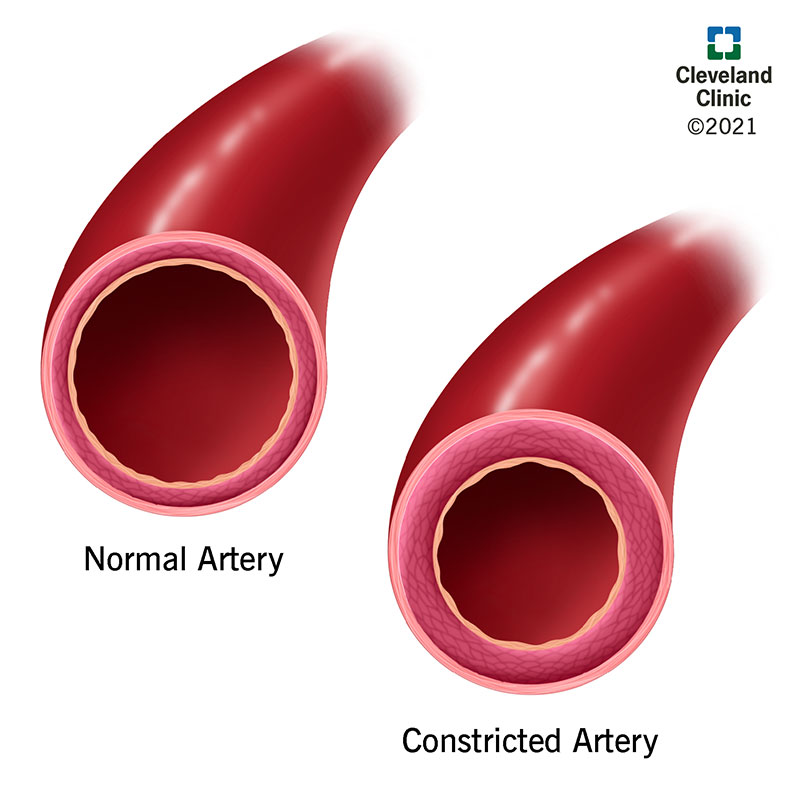Vasoconstriction (muscles tightening your blood vessels to shrink the space inside) is something your body needs to do sometimes. For example, when you’re outside in the cold, vasoconstriction helps keep you warm. But too much vasoconstriction can raise your blood pressure or put someone with hyperthermia at risk of heat stroke.
Advertisement
Cleveland Clinic is a non-profit academic medical center. Advertising on our site helps support our mission. We do not endorse non-Cleveland Clinic products or services. Policy

Vasoconstriction is what healthcare providers call it when the muscles around your blood vessels tighten to make the space inside smaller. This is the opposite of vasodilation, which opens your blood vessels to make the space inside bigger.
Advertisement
Cleveland Clinic is a non-profit academic medical center. Advertising on our site helps support our mission. We do not endorse non-Cleveland Clinic products or services. Policy
Whenever your blood vessels need to be tightened or widened, your vasomotor nerves (part of your sympathetic nervous system) can tell your muscles to adjust the amount of space inside your blood vessels.
Vasoconstriction can help or hurt your body, depending on the situation.
When you’re outside in the cold, peripheral vasoconstriction helps your body keep from losing too much heat by making less blood flow to your skin. Older people have less of an ability to respond to the cold in this way and protect themselves from hypothermia.
Sometimes, healthcare providers use medicines to create vasoconstriction to help people with certain medical conditions. These include:
Even some medicines you can buy without a prescription can cause vasoconstriction, such as nasal decongestants or cold medicines. People with high blood pressure could be more at risk for cardiovascular problems when vasoconstriction happens because it can be worse than in people without high blood pressure. This is why providers tell people with high blood pressure not to take nasal decongestants or cold medicines that cause vasoconstriction.
Too much vasoconstriction can cause problems, such as:
Advertisement
Different things can cause vasoconstriction. They include:
Yes. If you have high blood pressure, you should avoid:
Once the cause of your vasoconstriction is gone, the vasoconstriction will be, too. For example, when you get warmed up, your body’s blood vessels will widen. Some medical problems, like Raynaud’s phenomenon, need to be treated with prescription medicine to widen blood vessels.
At home, you can:
You can’t prevent all vasoconstriction of blood vessels. And you wouldn’t want to when you’re cold. But you can protect yourself from too much vasoconstriction in these ways:
You should seek medical help when you have a bothersome or serious problem, such as:
When blood vessels become narrow, it takes more pressure for the blood to travel through the blood vessels.
It occurs in your blood vessels throughout your body.
Vasoconstriction can be helpful or harmful to your body. When you’re out in the cold, vasoconstriction helps keep you warm. But there are times when vasoconstriction — especially too much of it — is harmful. You can protect yourself against too much vasoconstriction by limiting how much caffeine you drink and keeping stress under control.
Advertisement
Cleveland Clinic’s primary care providers offer lifelong medical care. From sinus infections and high blood pressure to preventive screening, we’re here for you.

Last reviewed on 08/09/2021.
Learn more about the Health Library and our editorial process.